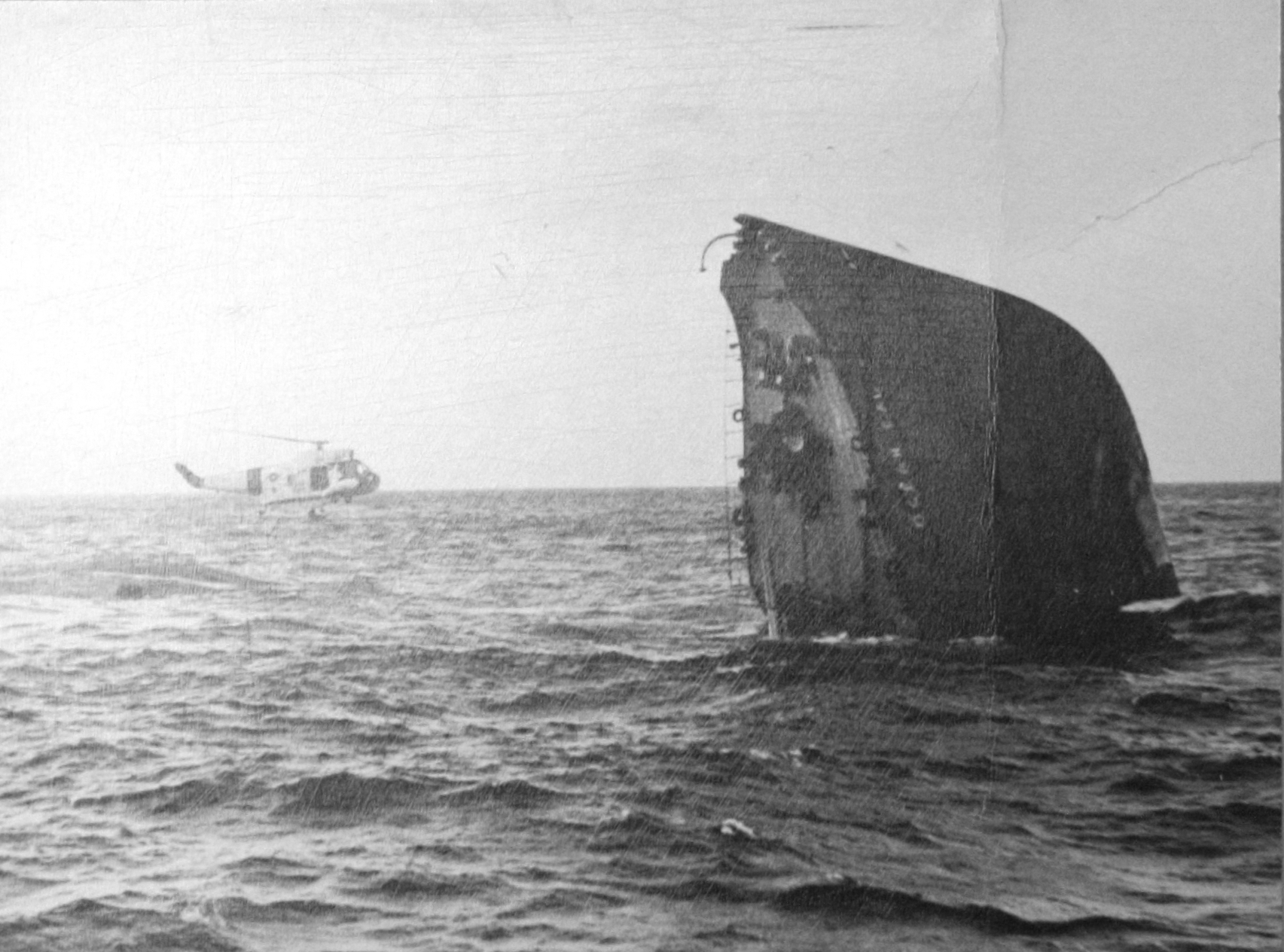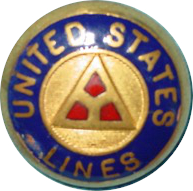United States Lines Uniform Buttons
Usually, when a steamship company of any gravitas incorporates itself, it assumes all the trappings of a maritime organization. It usually invests in stock certificates depicting sea-borne commerce, a house flag flown from the masts of its vessels, cap devices for its officers and stewards, and buttons to adorn its uniform coats. United States Lines (USL) throughout its history was no different. Below, please find an array of buttons made expressly for United States Lines.
A discussion point especially worth considering is button backs are often excellent aides to determine the period of button manufacture, but not necessarily wear. Large steamship companies with several corporate incarnations like United States lines buck the trend. Buttons, like cap badges, were bought from uniform shops or disbursed by pursers – and they continued to be disbursed until their stock was depleted. And uniform items were often recycled either out of goodwill or for practical reasons. For instance, aboard United States Lines ships in the 1950s corporate policy and tradition encouraged licensed officers to dine together in the ship’s informal dining room – the saloon. Dress requirements of the era dictated the wear of khaki coats in the saloon; ever-practical, officers loaned each other coats between watches or sold them amongst themselves when they paid off – an engineer might be wearing a predecessor of two or more voyages ago’s coat to appear properly attired for dinner! Regarding buttons, this meant a coat could have older-style buttons for quite some time with no one the wiser. Moreover, the Second World War confused the once-staid field of button wear; whereas the United States Navy and steamship companies once exercised tight control over the supply of buttons, wartime exigencies introduced substitutions and ersatz designs – thus, once established button designs fell away, leaving United States Navy or “yacht club” buttons as the only options for seamen – the latter being United States Merchant Marine Academy Cadet buttons (!).
United States Lines Uniform Buttons gallery
In looking at United States Lines buttons, the timeline admittedly appears choppy. This has as much to due with corporate history as with currents within merchant marine attire.
NB.: Please click on the bold text for a large-size image of the cited button.
USSB years 1923-1929
[VC-88/27] begins the collection of United States Lines buttons; it was originally the button for officers serving on SS Leviathan in 1923 continued to be seen up until the 1930s; its wear continued after the scrapping of SS Leviathan since its personnel transferred primarily to Panama Pacific Line ships – as uniforms wore out, this button disappeared.
Chapman era 1929-1931
[VC-88/26] inaugurates the short Chapman era (1929-1931) that began when the United States Shipping Board (USSB) sold USL to Paul W. Chapman & Co. and ended when the lack of profits practically sank the company. The button employed a relatively simple Deco logo and its design was reproduced on flags, ephemera, medals, and buttons – and it stood out since it resembled a stylized ship’s propeller. These buttons came in gilt and nickel for Deck/Engineering and Steward’s Departments, respectively; First Class stewards were nattily uniformed and they sported buttons with enamels – the design was mirrored their cap badges. Some of [Chapman era] buttons have an added star to the USL logo – these were worn by employees aboard USL-American Merchant Lines ships (USL and AML were bought together and merged under Chapman).
The USLO button was created in 1929, immediately after Paul Chapman took control of USL, and was in use until 1930. The letters are an abbreviation for “United States Lines Operations, Inc.” This company was separate from but related to USL and was under the same corporate umbrella as USL. The firm was concerned with running the assets – boats and utility craft around the docks – and various dockside facilities and warehouses used by the USL fleet. Thus far, I have not come across any definitive photographs of its wear.
After Paul W. Chapman & Co. had both USL and AML taken from it by USSB, the Federal government handed AML to J. H. Winchester & Co. and managed USL alone. During this brief period, I am unaware of any new button patterns coming about; in fact, USL ships continued to wear a version of Paul W. Chapman & Co. flag.
IMM holding 1932-1952
[VC-84/12] wear by USL personnel is debatable since USL did not fall directly under the International Merchantile Marine Company (IMM) corporate umbrella until 1932 – this button pattern is ten years older than the acquisition. After the acquisition, a more generic IMM Co. button, [VC-84/11] was worn on USL uniform whites during the 1930s. In analyzing period photographs, this specific button was not always worn; with USL officers joining the ranks of the United States Naval Reserve (USNR), USL officers often wore USN or USNR buttons when appropriate. With most officers enrolling in the United States Maritime Service in the 1940s for wartime service, they wore that service’s buttons. With the War Shipping Administration’s return of the fleet to USL control in March 1946, USL took a proud view of its wartime service and redesigned both its house flag and introduced a new button design ( [VC-88/28] ) with a re-imagined “Blue Goose”; this button held through the launching of the SS United States, afterward of which United States Navy buttons were exclusively worn.


References
McGuinn, William and Bazelow, Bruce S. (2006). American Military Button Makers and Dealers; Their Backmarks & Dates. McLean, Virginia: William McGuin & Brice S. Bazelow.
A catalog of backmarks along with brief histories of manufacturers.
Sturm, Robert C. (2017). SS United States: The View From Down Below. Medford, New York: Robert C. Sturm.
Although a description of the Big U from a past Engineer’s perspective, it has many photographs of crew members.
VanCourt, Don. (1998). Transporation Uniform Buttons, Vol. III: Maritime and Aviation. Madison, New Jersey: Don VanCourt.
The only reference on maritime uniform buttons; the author uses McGuinn and Bazelow to assist in cross-referencing button dates.













